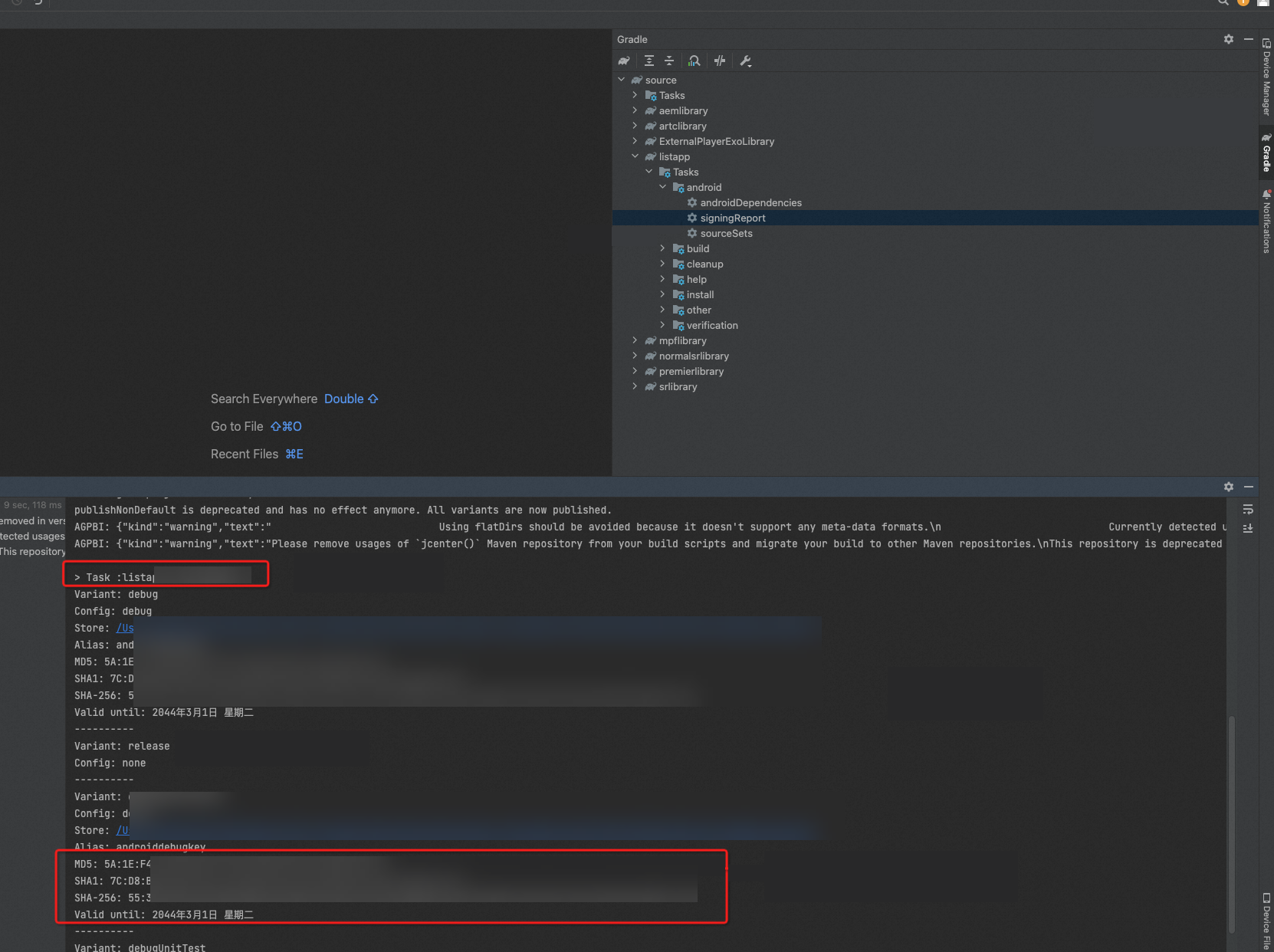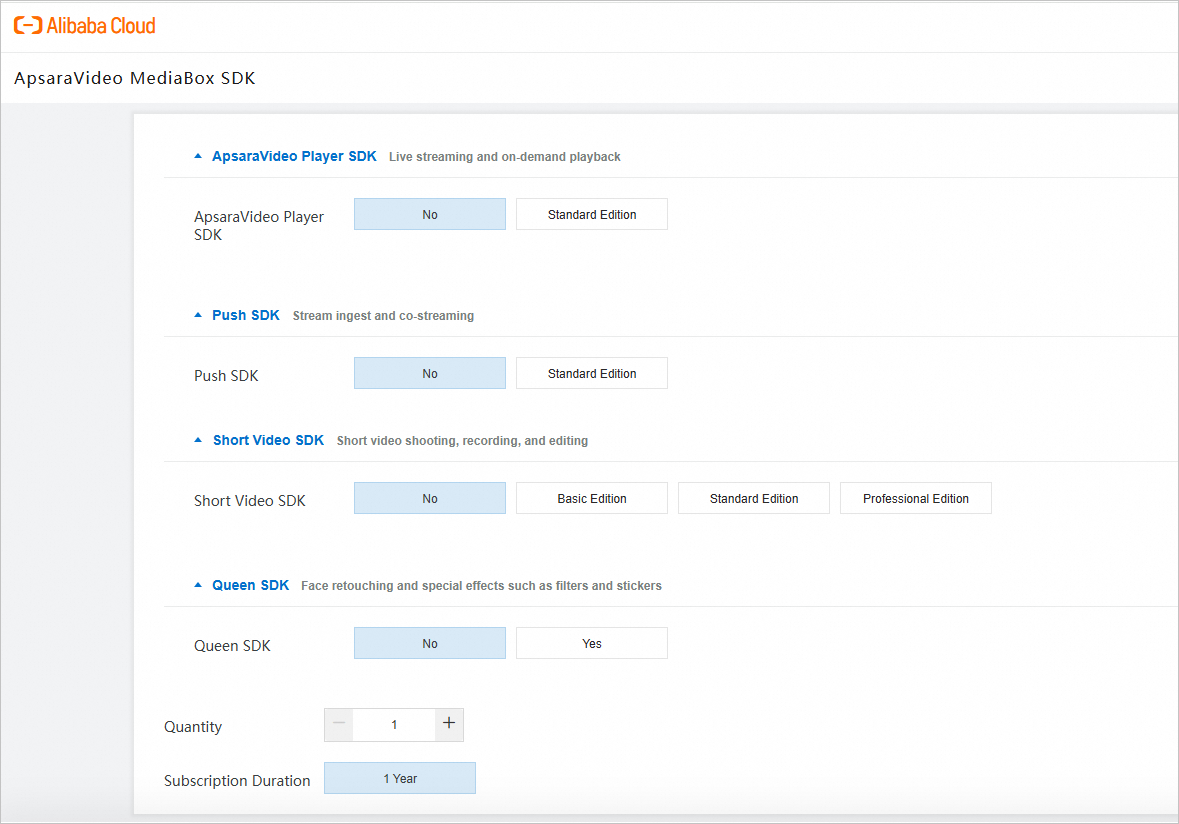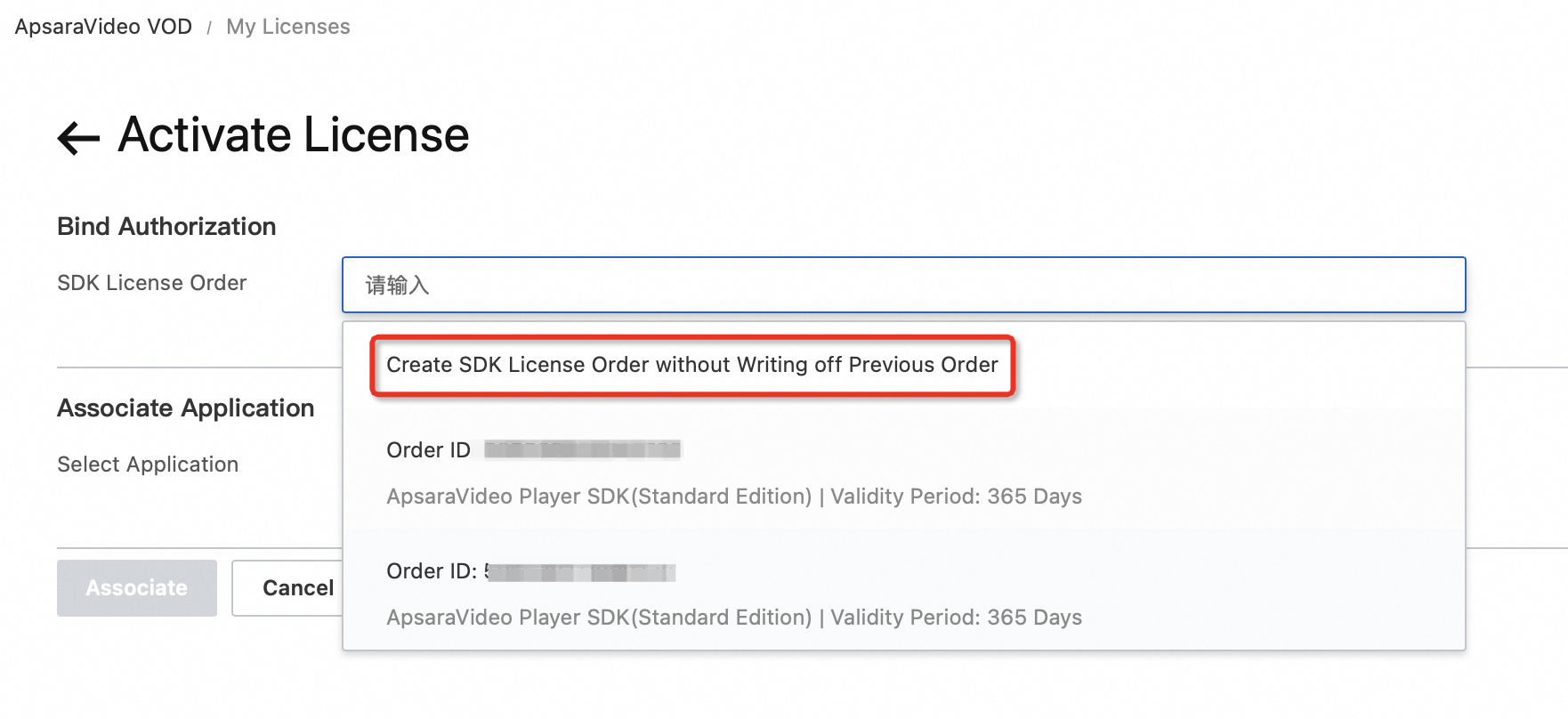This topic describes how to get started with ApsaraVideo MediaBox SDK.
Step 1: Understand the features of ApsaraVideo MediaBox SDK
ApsaraVideo MediaBox SDK provides the following services: stream ingest, co-streaming, short video, player, and retouching. The following table describes the features of ApsaraVideo MediaBox SDK and its sub-service SDKs. ️✔️ indicates that the feature is supported and ❌ indicates that the feature is not supported. For more information, see Functions and features.
Feature | Full-feature Edition | Player SDK | Push SDK | Short video SDK | Queen SDK |
Live streaming initiation by streamer | ️️️️️️✔️ | ❌ | ️️️️️✔️ | ❌ | ❌ |
| ️️️️️️✔️ | ❌ | ️️️️️️✔️ | ❌ | ❌ |
Video recording | ️️️️️️✔️ | ❌ | ❌ | ️️️️️️✔️ | ❌ |
Video editing | ️️️️️️✔️ | ❌ | ❌ | ️️️️️️✔️ | ❌ |
Video upload | ️️️️️️✔️ | ❌ | ❌ | ️️️️️️✔️ | ❌ |
Live stream playback | ️️️️️️✔️ | ️️️️️️✔️ | ❌ | ❌ | ❌ |
VOD playback | ️️️️️️✔️ | ️️️️️️✔️ | ❌ | ❌ | ❌ |
Retouching | ️️️️️️✔️ | ❌ | ❌ | ❌ | ️️️️️️✔️ |
Gesture recognition | ️️️️️️✔️ | ❌ | ❌ | ❌ | ️️️️️️✔️ |
Intelligent image matting | ️️️️️️✔️ | ❌ | ❌ | ❌ | ️️️️️️✔️ |
Step 2: (Optional) Use a demo of ApsaraVideo MediaBox SDK
Scan the following QR code to download and install a demo of ApsaraVideo MediaBox SDK.

For more information about the demo source code, see Demo.
Step 4: Apply for a license
Log on to the ApsaraVideo VOD console.
In the left-side navigation pane, choose .
Click the Application Management tab and then click Create Application.
On the Create Application panel, configure the application information.
Configure the following parameters: Application Name, Platform Type, Android Package Name, Bundle ID, Web Domain Name, and HarmonyOS BundleID. Click Create to create the application.

Associate the signature of an Android application
NoteThe signature is required only if you select Android for the Platform Type parameter and select Associate Signature.
This operation improves application security and prevents the license from being used by another application with the same package name.
The following SDKs do not require a signature: ApsaraVideo MediaBox SDK V1.7.0 and later, ApsaraVideo Player SDK V5.5.2 and later, Push SDK V4.4.9 and later, and Short Video SDK V3.36.0 and later.
To obtain the MD5 signature of an Android application, you can use one of the following methods:
Run the
keytool -v -list -keystore your.keystorecommand to query the MD5 signature.To obtain the signature from Android Studio, click Gradle in the right-side navigation pane, find the corresponding application, and then choose Tasks > android > signingReport. In this case, you must convert the letters into lowercase and remove semicolons (;) from the obtained MD5 signature.

Click the License Management tab and then click Activate License.

Perform operations based on whether you have purchased licenses.
If you have purchased licenses, select an order from the drop-down list.
If no orders are available, click Create SDK License Order from the drop-down list.
To purchase a license, go to the ApsaraVideo MediaBox SDK buy page, select an SDK and the corresponding functional modules based on your business requirements, and then place the order.
ImportantAs shown in the following figure, you can purchase only one SDK in a single order. For example, you cannot purchase ApsaraVideo Player SDK Standard Edition and Short Video SDK Standard Edition in an order.

Confirm your configurations and click Associate.
NoteYou can bind a license to only one application across Android, iOS, HarmonyOS, and web platforms.

Download the license file.
Go back to the License Management tab, find the application that you want to configure, and then click Download Certificate to download the license file. Save the license key displayed below the tab. The license file and key are required to integrate the license into the application project. For more information, see Bind a license.

Step 5: Integrate ApsaraVideo MediaBox SDK and configure the license
For more information, see Quick integration by scenario.
Step 6: Use ApsaraVideo MediaBox SDK based on your business requirements
For more information, see Integration by module.
Contact us
To obtain more information and technical support for ApsaraVideo MediaBox SDK, scan the following QR code by using DingTalk to join the ApsaraVideo MediaBox SDK user group.